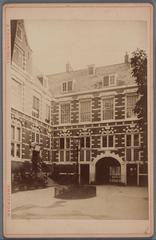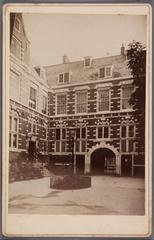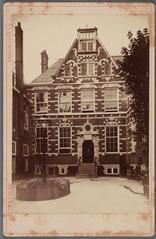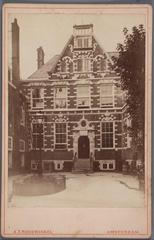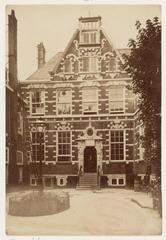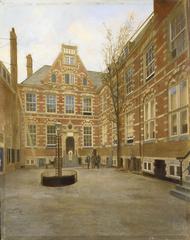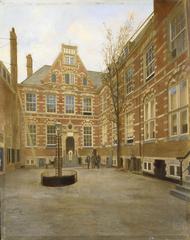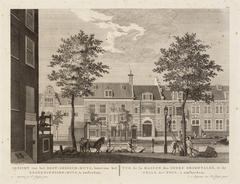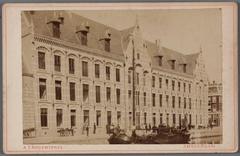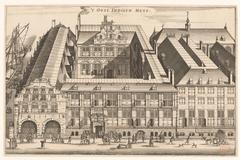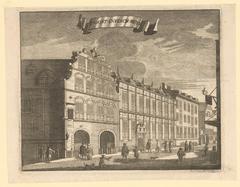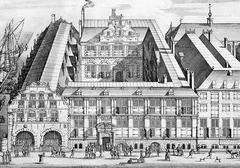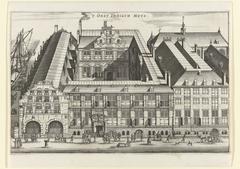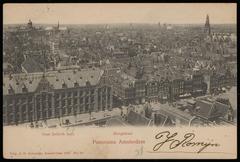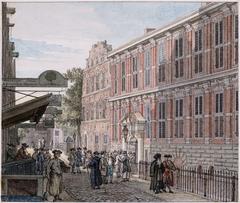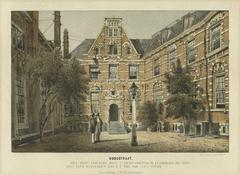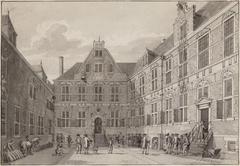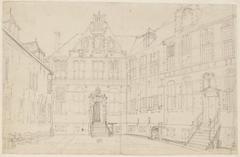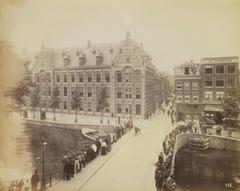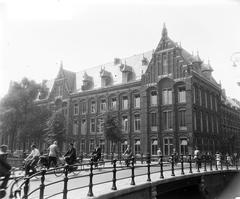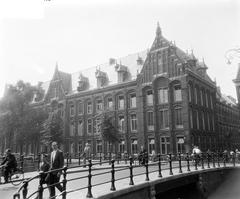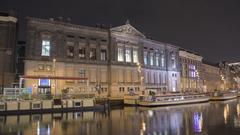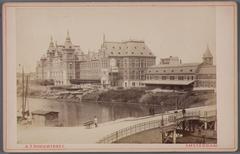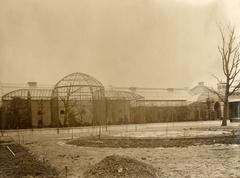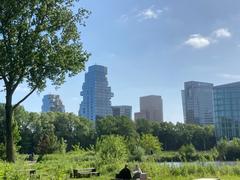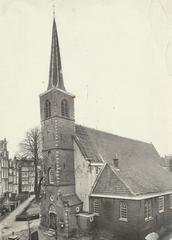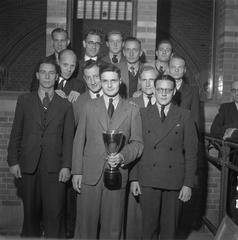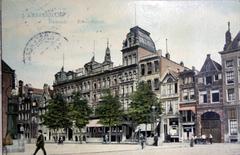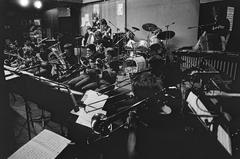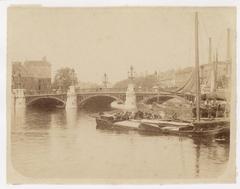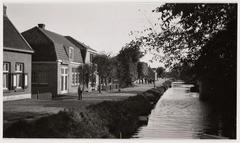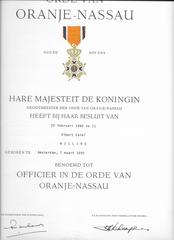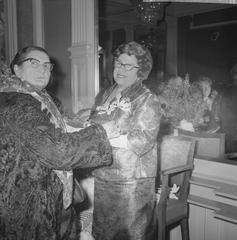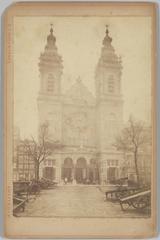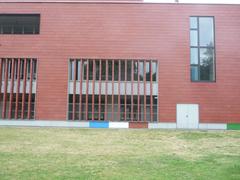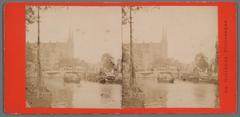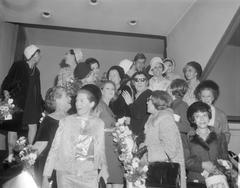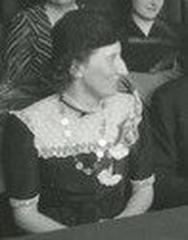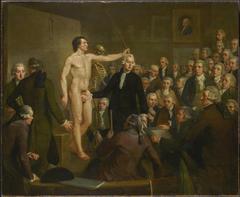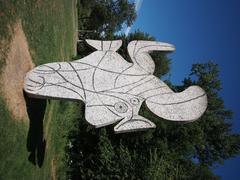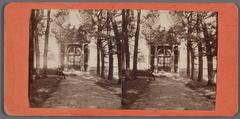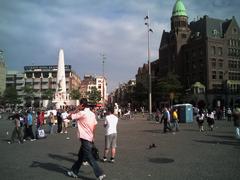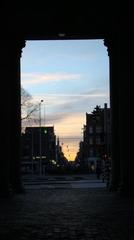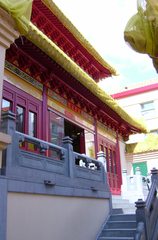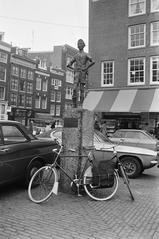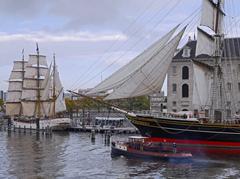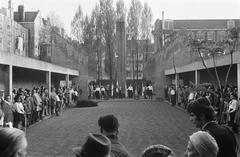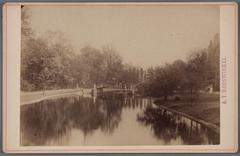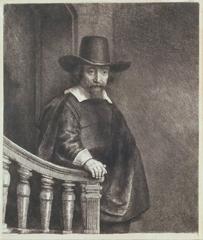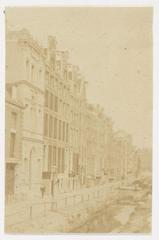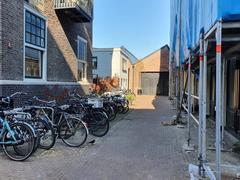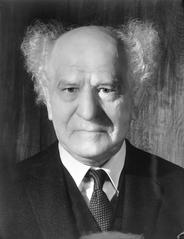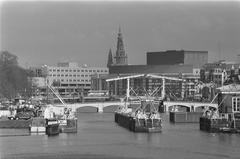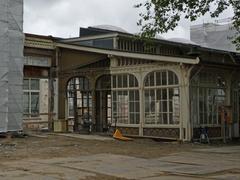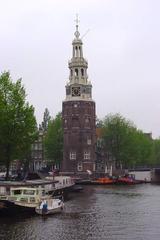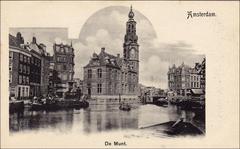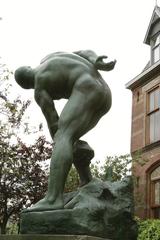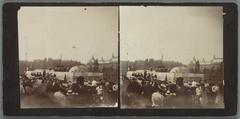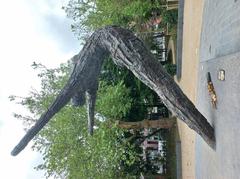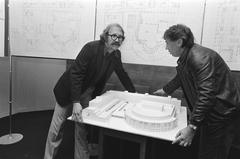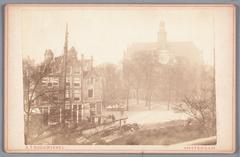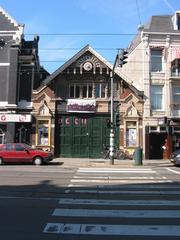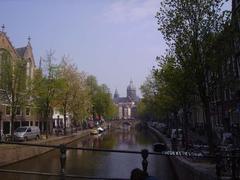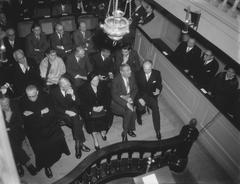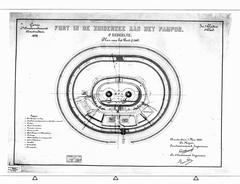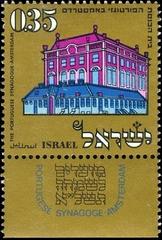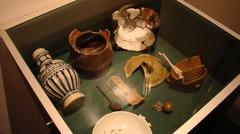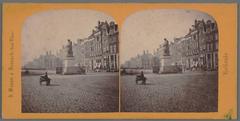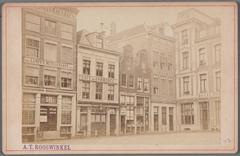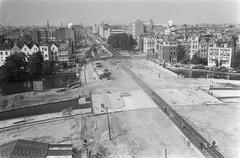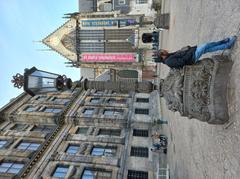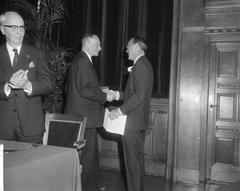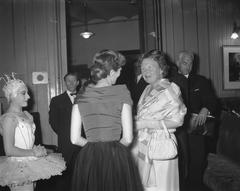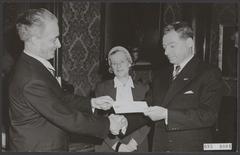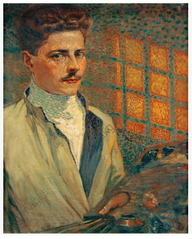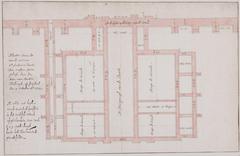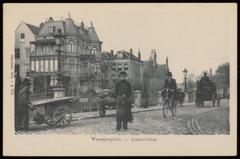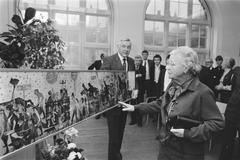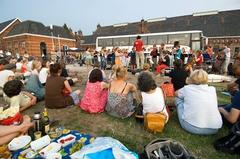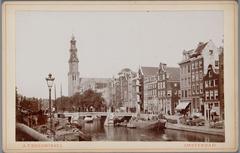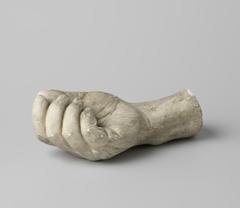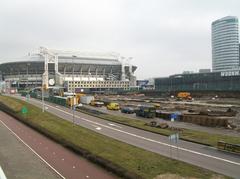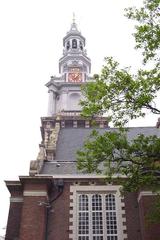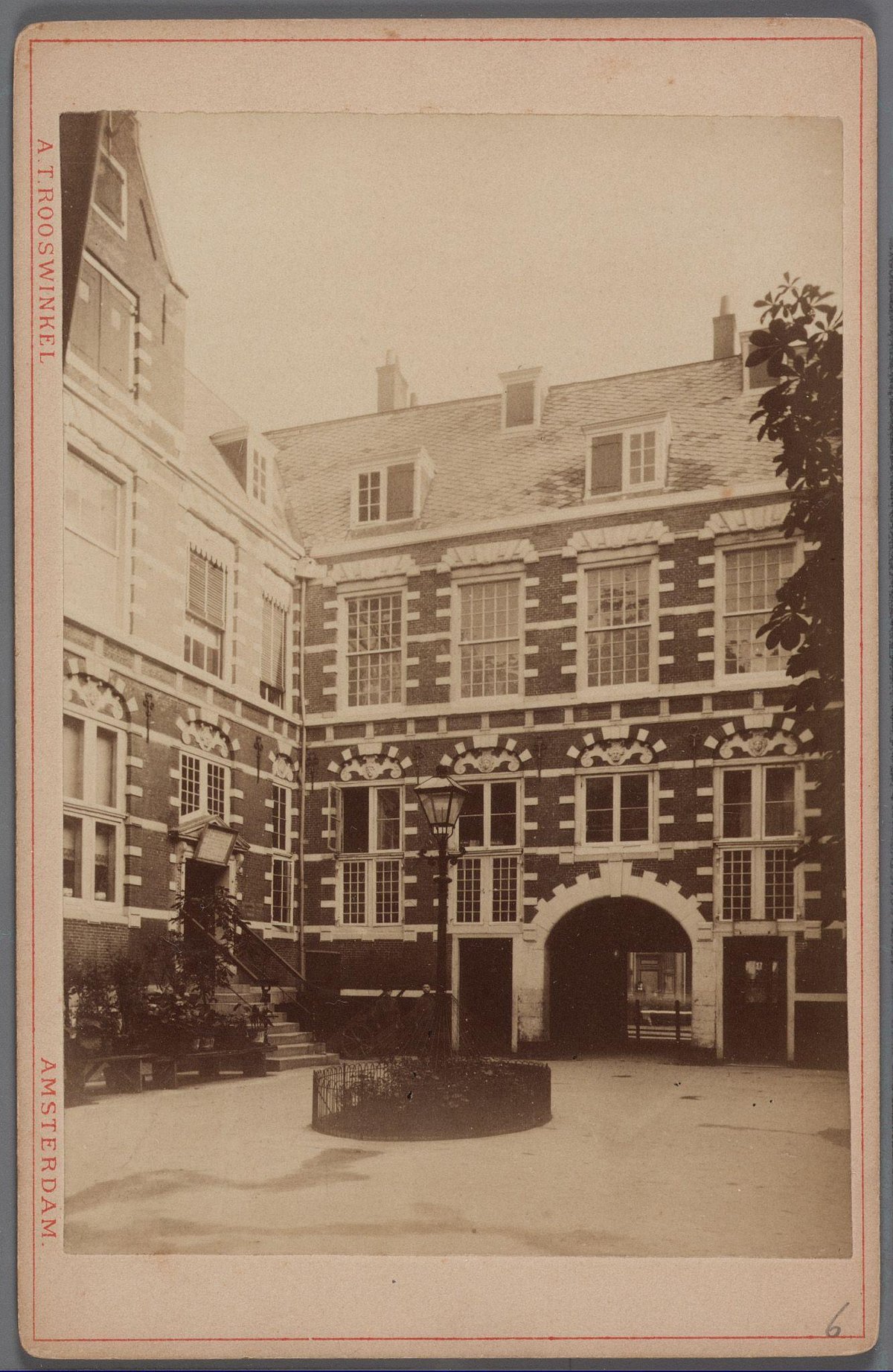
Oost-Indisch Huis Amsterdam: Visiting Hours, Tickets, and Historical Sites Guide
Date: 14/06/2025
Introduction: History and Cultural Significance
Situated in the heart of Amsterdam’s historic canal district, the Oost-Indisch Huis stands as a monument to the Dutch Golden Age and the era’s pioneering spirit in global commerce. Built in 1606 as the Amsterdam headquarters of the Dutch East India Company (Verenigde Oost-Indische Compagnie, or VOC), it was the nerve center for one of history’s most influential trading organizations. The Dutch Renaissance architecture, characterized by stately brick façades, ornate gables, and elegant courtyards, reflects both the wealth and ambition that marked Amsterdam’s 17th-century rise.
Beyond its architectural grandeur, the Oost-Indisch Huis was where the VOC’s directors, the “Heeren XVII,” orchestrated vast trading operations that shaped the course of global history. Today, this building is a vital cultural landmark, offering a window into Dutch mercantile power, colonial enterprises, and the development of Amsterdam itself. While public access is limited to guided tours and special events, its central location near historic sites like the Rembrandt House Museum and Oude Kerk makes it essential for anyone interested in Amsterdam’s Golden Age (Amsterdam Old Town, I amsterdam, University of Amsterdam).
Table of Contents
- Introduction: History and Cultural Significance
- Origins and Construction
- The VOC Era: Powerhouse of Global Trade
- Architectural and Cultural Significance
- VOC Decline and Later Uses
- Key Historical Events and Figures
- Visiting Hours and Ticket Information
- Exploring Amsterdam’s Historical Sites: Nearby Attractions
- Visitor and Travel Tips
- Preservation and Public Access
- The Oost-Indisch Huis in Modern Amsterdam
- Location and Accessibility
- Visitor Experience: What to See Inside
- Events and Special Access Opportunities
- Frequently Asked Questions (FAQ)
- Conclusion and Final Tips
- References
Origins and Construction
The Oost-Indisch Huis, located at Oude Hoogstraat 24, was constructed in 1606—just four years after the VOC was founded. Its initial purpose was to serve as the administrative headquarters for the VOC, the world’s first multinational corporation and the first to issue shares (Amsterdam Old Town). Designed in the Dutch Renaissance style, notable for its brick façade, ornate gables, and arched gateway, the building was expanded several times (notably in 1663 and 1750) to accommodate the company’s growing administrative needs. The complex eventually included offices, meeting rooms, warehouses, and recruitment centers for seafarers bound for Asia.
The VOC Era: Powerhouse of Global Trade
From the Oost-Indisch Huis, the VOC’s Amsterdam Chamber managed a vast trading empire stretching from Indonesia and Japan to India and beyond (I amsterdam). The building was the site of major decisions on trade expeditions, colonial governance, and the outfitting of ships. The VOC’s dominance in the spice, textile, and porcelain trades made Amsterdam one of the world’s wealthiest cities in the 17th century. The boardroom, with its original wood paneling and portraits, remains a highlight for visitors.
Architectural and Cultural Significance
The Oost-Indisch Huis exemplifies Dutch Renaissance architecture—red brick, decorative stonework, and symmetrical façades. Its imposing exterior features a main entrance with Tuscan pilasters and an enclosed courtyard showcasing ornate gables and decorative brickwork (explorial.com). The building’s design, attributed in part to city architect Hendrick de Keyser, influenced later civic and commercial architecture in Amsterdam.
Culturally, the Oost-Indisch Huis symbolizes both the achievements and the moral complexities of the Dutch Golden Age. While the VOC pioneered global trade and finance, it was also involved in exploitation and colonial conflict—a legacy addressed in exhibitions and guided tours.
VOC Decline and Later Uses
The VOC’s power waned in the 18th century due to internal corruption, growing competition, and expensive wars. The company was dissolved in 1798, and the Dutch state assumed control of its assets (Amsterdam Old Town). The Oost-Indisch Huis served various governmental functions before being acquired by the University of Amsterdam in the 20th century. Today, it houses university offices and hosts academic events and select public tours.
Key Historical Events and Figures
Several pivotal events unfolded within these walls: the first public share offering, expeditions led by Abel Tasman and Jan Pieterszoon Coen, and the regular convening of the Heeren XVII. These figures and moments shaped the global economy, colonial policy, and modern corporate structures.
Visiting Hours and Ticket Information
Visiting Hours:
The Oost-Indisch Huis is not open daily. Public access is limited to special events such as Open Monumentendag (Heritage Days, September) and Open Garden Days (June), and select guided tours (University of Amsterdam).
Tickets:
Entry is usually free during public events. Guided tours or special exhibitions may require advance tickets, often costing €10–€20. Spaces are limited; booking ahead is highly recommended.
Booking:
Check event organizers or the University of Amsterdam’s website for availability and ticketing.
Accessibility:
The building is partially accessible due to its historic structure. Contact organizers in advance if you have mobility concerns.
Exploring Amsterdam’s Historical Sites: Nearby Attractions
The Oost-Indisch Huis is surrounded by major Amsterdam historical sites:
- Nieuwmarkt & Waag: Lively square and medieval building, 2-minute walk.
- Rembrandt House Museum: Former home of the artist, 5 minutes by foot.
- Amsterdam Museum: Comprehensive city history, 10-minute walk.
- Oude Kerk: Amsterdam’s oldest building and church, nearby.
- Canal Cruises: Departure points close by for tours of Amsterdam’s Golden Age architecture.
Visitor and Travel Tips
- Plan ahead: Visit during special open days for full access.
- Combine visits: See other nearby landmarks for a richer experience.
- Getting there: The building is within 10 minutes’ walk of Amsterdam Centraal Station; accessible by metro (Nieuwmarkt station) and tram.
- Amenities: Limited restrooms during events, no cloakroom, café, or shop on site—many options nearby.
- Etiquette: Respect university activities, keep quiet, and avoid food or drink in historic areas.
Preservation and Public Access
The Oost-Indisch Huis is a designated national monument (Rijksmonument), protected under Dutch heritage law (Rijksmonumenten). Restoration projects in the late 20th century preserved its original features, including wooden beam ceilings and decorative facades (en.wikipedia.org).
The Oost-Indisch Huis in Modern Amsterdam
Today, the building remains a vital part of Amsterdam’s cultural and academic landscape. It hosts exhibitions, lectures, and educational programs exploring the VOC’s global legacy and Amsterdam’s role in world history. Its association with the University of Amsterdam makes it a center for scholarship and public engagement (University of Amsterdam).
Location and Accessibility
- Address: Oude Hoogstraat 24 / Kloveniersburgwal 48, 1012 CE Amsterdam, Netherlands
- Public Transport: Metro (Nieuwmarkt station), various trams, and bike parking nearby.
- Map: View Oost-Indisch Huis on Map
Visitor Experience: What to See Inside
- The Boardroom (Regentenkamer): Features original woodwork, period furnishings, and VOC director portraits.
- The Courtyard: Amsterdam Renaissance architecture, often open during special events.
- Historic Documents and Artifacts: Sometimes on display during exhibitions.
- Heeren XVII Room: Grand meeting space with restored wooden beams (nl.wikipedia.org).
Events and Special Access Opportunities
- Open Monumentendag: Free access to historical buildings, including the Oost-Indisch Huis.
- Open Garden Days: Explore courtyards and gardens in mid-June.
- University Events: Public lectures and exhibitions occasionally open to visitors.
Frequently Asked Questions (FAQ)
Q: Can I visit the Oost-Indisch Huis any day?
A: No, it is generally open to the public only during special events or by guided tour. Check official websites for dates.
Q: How do I get tickets for tours?
A: Purchase online through event organizers or the University of Amsterdam’s website; advance booking is recommended.
Q: Is the building wheelchair accessible?
A: Partially; contact organizers for details.
Q: Are photography and filming allowed?
A: Usually permitted in the courtyard and public areas; restricted in historic rooms.
Q: What other historical sites are nearby?
A: Nieuwmarkt, Rembrandt House, Amsterdam Museum, Oude Kerk, and canal cruise departures.
Conclusion and Final Tips
The Oost-Indisch Huis offers a rare and immersive glimpse into Amsterdam’s Golden Age, the rise of global trade, and the complexities of Dutch history. While general access is limited, planning your visit around special event days or guided tours allows you to experience its architectural splendor and layered past. Its central location and proximity to other major landmarks make it a highlight of any cultural itinerary.
For the latest updates on visiting hours, ticketing, and events, consult the official university and tourism websites. Enhance your visit with audio guides or curated tours via the Audiala app, and follow social media for travel tips and heritage stories.
By exploring the Oost-Indisch Huis, you step into a space where the currents of commerce, power, and cultural exchange continue to shape Amsterdam’s vibrant history (DutchCulture, I amsterdam).
References
- Amsterdam Old Town: East Indian House
- I amsterdam: Oost-Indisch Huis
- Wikipedia: Oost-Indisch Huis
- Rijksmonumenten: Oost-Indisch Huis
- University of Amsterdam: Contact and Visiting Information
- DutchCulture: Oost-Indisch Huis
